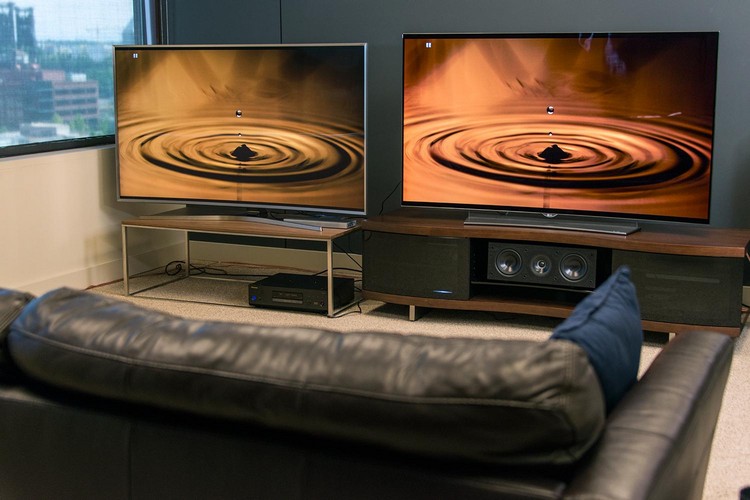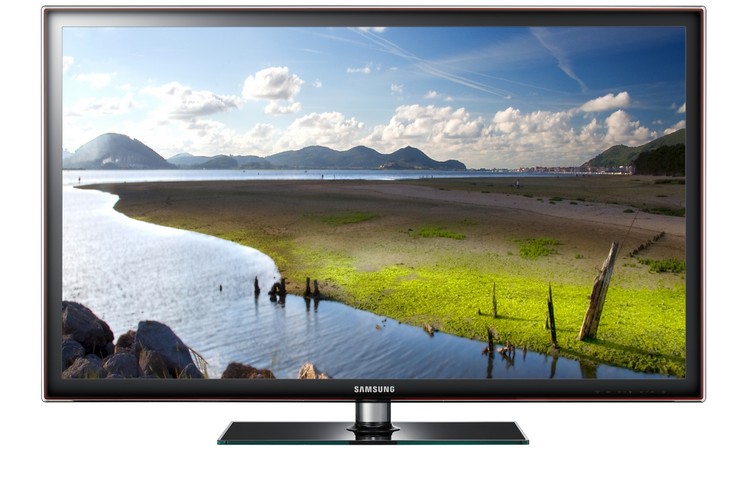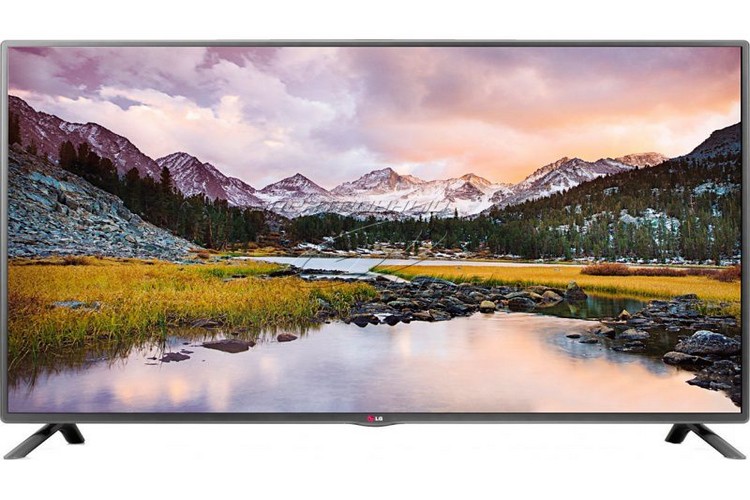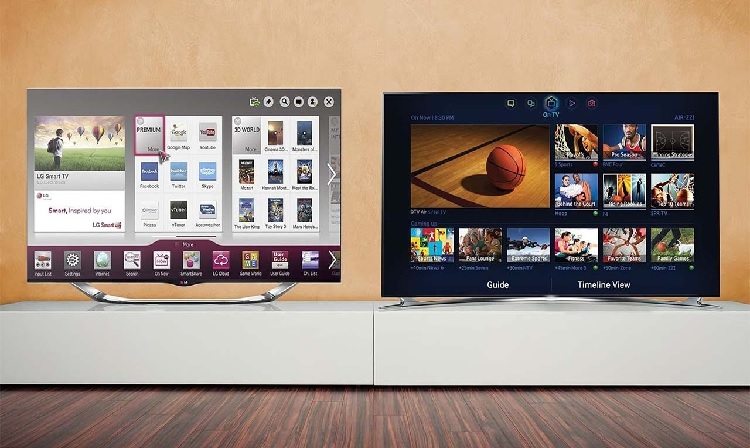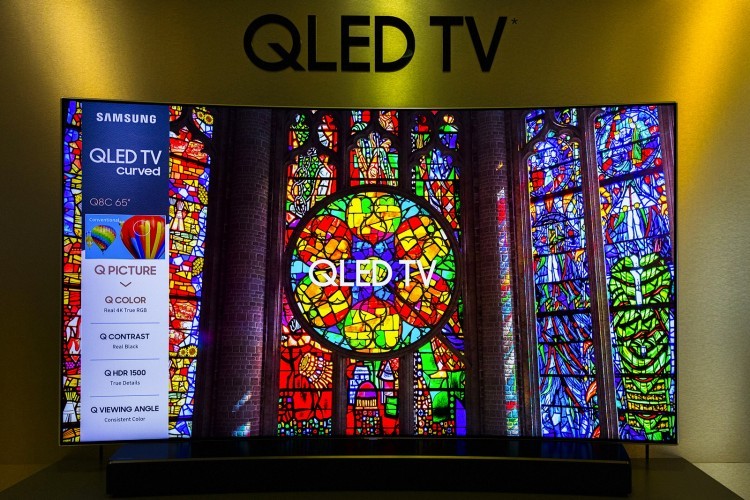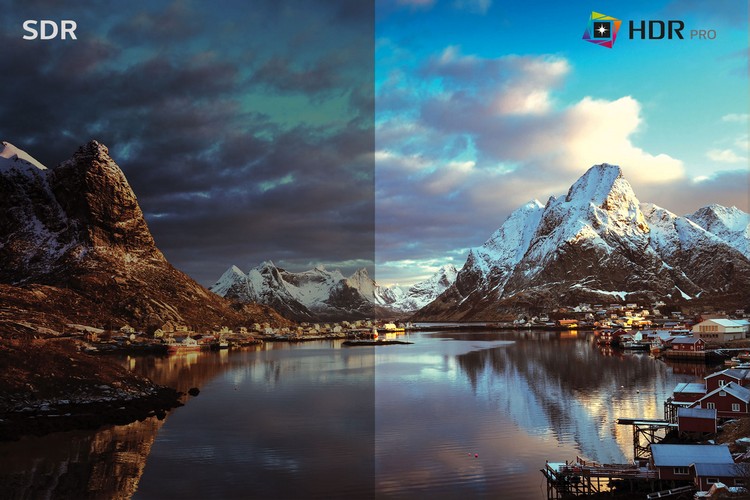Which TV is better - LG or Samsung: comparison of features, prices, image quality
 LG and Samsung are world-renowned corporations. Both brands compete in the segment of electronics and home appliances. Against the backdrop of growing competition, it is difficult to single out the leading TV manufacturer.
LG and Samsung are world-renowned corporations. Both brands compete in the segment of electronics and home appliances. Against the backdrop of growing competition, it is difficult to single out the leading TV manufacturer.
Let's try to identify the best panels through a comparative analysis of models. Consider the quality of video, technology, sound, design and equipment of TVs with other useful options.
Contents
Brands description
South Korean brand LG Electronics was founded in 1958. The company has accumulated vast technological experience and stepped confidently into the advanced digital age. Today it is a smart and fast brand with the status of a global company developing innovative technologies of the future.
The history of the competing Korean brand Samsung began in 1969. The company is constantly expanding production of strategic products, introducing outstanding technology, innovative design. Today, the corporation is considered a global technology leader that produces premium devices.
Differences between brands
In the segment of television equipment, the brands practically have no differences. Samsung positions a more subtle approach to the buyer, while LG promotes an aggressive policy, designed for young people.
Technique differs in the location of connectors, the type of matrix, design, technology, backlighting screen.
Technology which brand of TVs is better - LG or Samsung
Let's consider the technology of South Korean brands.
Type of matrix: VA vs IPS
Samsung uses a VA matrix. The image is voluminous, sharp, clear, contrast, but with smaller viewing angles. The technology is suitable for those who look at the screen strictly straight or with a slight deviation, in bright light or, conversely, in the dark.
LG's matrix technology is IPS. The picture looks softer, without jumps, with wide viewing angles. This is appropriate when viewing content from different points in the room.
However, the panel loses slightly to VA in black level. In the 2021-2022 models, this is compensated for by Full Array Local Dimming. Such TV is comfortable to watch in the dark.
Dolby Vision and HDR 10
Samsung supports HDR 10+ (Peak Illuminator, 10-bit color) technology. The brand has managed to achieve clear detail, color reproduction, realistic picture.
The quality of content playback is at the level of professional digital video. HDR 10+ is recommended for Google Play video source.
LG supports Dolby Vision technology with 12-bit color. The format gives an equally high-quality image. Works great when watching video sources like Apple TV, Netflix.
Processors
The latest Samsung Neo Quantum processor features the latest scaling technology. The panel gets the highest resolution, detail of the highest clarity.
The picture does not depend on the quality of the image source. The chip guarantees the fastest possible response, the effect of total immersion.
Competing LG models are equipped with a7 Gen3 processor. The chip demonstrates the same characteristics, is not inferior to its Korean counterpart in terms of dynamics, sound control, speed of response.
The fourth generation of LG signal chip is responsible for picture processing of 8K Alpha9. With such a processor, low-resolution content looks really good.
Tizen vs webOS
The operating system affects the speed of access to content.
Samsung's Smart TV platform uses Tizen, while LG uses webOS, a full-featured built-in web browser with a minimalist design.
At the bottom of the screen, the user selects apps, features, and streaming platforms. Artificial intelligence ThinQ AI displays hints, recommendations for viewing.
Samsung conveniently groups functions in the menu, which is more comfortable. Switching between on-air and online content goes without delay. Games, any content is available in the cloud storage. It is easier to connect tablets and mobile devices to the TV. Videos can be streamed from smartphone to TV and from TV to smartphone. The new Samsung Smart TV platform gives freedom of choice in entertainment and content viewing.
Both systems have high speed performance, a variety of applications, and clean signal processing. The choice is a matter of consumer taste.
OLED and QLED
LG uses OLED backlight matrix. The principle is based on organic LEDs (hence the name Organic Light Emitting Diodes).
Within a few years, formerly expensive technology entered mass production and became available to most users. LG has created a stunning OLED screen, a truly effective HDR.
Features:
- Each pixel lights up a specific color. The screen reflects the true depth of black, show stunning contrast, brightness of colors. Advanced rendering has allowed the brand to get a completely black color.
- High speed control of the individual matrix pixel contributes to low power consumption.
- Available in 99% DCI-P3 color space, 10-bit color depth. The technology reproduces excellent color especially when zooming in and out.
- Viewing angle is 160 degrees.
- The refresh rate of 0.001 ms covers a smooth picture in fast paced scenes.
OLED screen practically does not glare, suitable for bright rooms, makes comfortable viewing in the dark. Viewing angles are as wide as possible. The backlight gives great colors on the screen, reproducing 20 levels of brightness. The peak brightness is up to 1000 nits, which is impressive.
Samsung has achieved impressive parameters, using the technology of quantum dots QLED (Nano-Crystal, Quantum Dot). The main difference from OLED is the wider coverage of the color range.
Features:
- The standard LED matrix is illuminated by LEDs, resulting in a wide, saturated color gamut and brighter colors. The technology easily delivers 1,000 nits of brightness and high response. More than a billion different color combinations are displayed on the screen.
- The use of new scaling ensures optimal backlighting, reproducing brighter, more realistic images. This will appeal to fans of sports programs and blockbusters.
Picture contrast in QLED is lower than in OLED.
Characteristics of TVs
Let's consider the main characteristics of the panels.
Price-quality ratio
Samsung produces and sells more inexpensive models, so it overtakes LG in terms of sales.
With equal technical parameters, Samsung TVs are 7-10% more expensive. Most consumers prefer to buy premium models from LG.
Picture quality
Picture quality with equal technical parameters is almost identical. Only some nuances can be highlighted.
The image of Samsung with QLED screen technology (or a more advanced version of SUHD) is brighter and clearer. The latest models have maximum detail and contrast.
Quantum Matrix Pro technology with tiny Quantum Mini LEDs creates the sharpest picture by very accurate backlighting and deep black.
The brand's models clearly display all the nuances, such as the display of sunlight, car license plates, reflections of objects on water, fire in battle scenes. Samsung surpasses the competition in color coverage, clarity and detail.
LG has emphasized the naturalness of the image, the best display of the entire spectrum of dark colors. The TVs are characterized by a wide viewing angle. The user can enjoy the benefits of 3D mode.
Among the disadvantages are weaker contrast at the edges. The picture suffers in highly dynamic scenes, reveals slightly blurred movements.
In panels with HDR Pro technology the picture received a perfect change of brightness, realism. Adjusting the black level, brightness is a very high range.
Infinite Contrast LG implemented with the help of Infinite Contrast technology. In the matrix with organic LEDs implemented individual brightness of the pixel up to complete blackout.
Sound quality
The Samsung sound circuitry produces a good sound. The possibilities of the panel is enough for a comfortable perception. SRS Theater Sound technology improves clarity, automatically adjusts the volume depending on the picture.
However, music and concert programs look standard. The manufacturer advises using a soundbar for the best possible sound quality.
LG likes to build in powerful speakers for bass. Subwoofers provide more depth, volume, high sound quality. Provides Clear Voice technology, which transmits a natural sounding voice with muffled background noise.
However, even this is not enough for excellent multi-channel sound - for this you will need an external sound panel.
Pretty decent sound panels LG, Samsung provides good clarity of voices, a certain level of bass. Features and settings allow you to make the sound base wider, to adapt the sound to the content you are watching.
However, all models could use a separate sound bar. A soundbar would provide a more immersive, immersive viewing experience.
Screen aspect ratio
Samsung and LG prefer widescreen models. The line of TVs is presented in a 16:9 screen format.
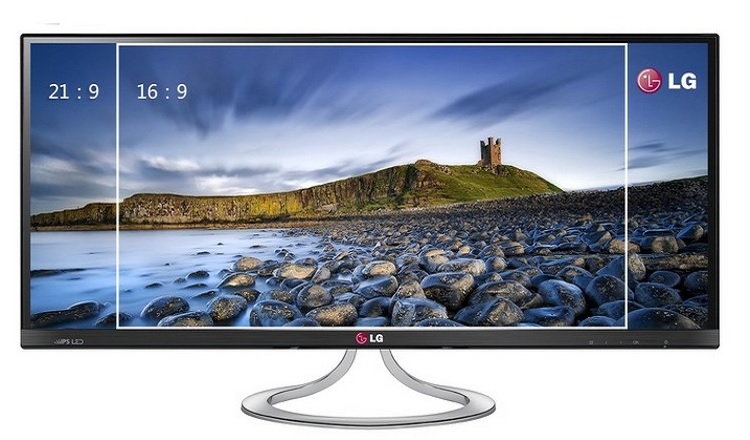
Diagonal
Samsung is releasing screens in 32, 43, 50, 55, 65, 75, 85''.
The competing LG is 48, 55, 65, 77, 83, 88''.
When buying a model with a larger screen, it is recommended to choose a resolution of at least 4K. When equipping a home theater - a screen of 45 inches. Both brands have implemented high picture quality at any diagonal.
Video call
LG panels do not have a built-in webcam, there is no skype calling option. Samsung has such licensed calling.
Which is better Smart TV - LG or Samsung
LG is complete with a great, easy-to-manage webOS browser.
The smart platform works well, offers a wide range of settings, and is characterized by unparalleled color reproduction. There is voice control, search with a virtual keyboard, which is very convenient.
Samsung Tizen demonstrates the best color saturation, quality graphics.
The OS is distinguished by a high speed of work without freezing. The user gets free widgets for IPTV, which wins over the competitor. The brand offers convenient management, interface, a large selection of applications.
Design of LG and Samsung TVs
LG makes models in a great slim design with a semi-circular or swivel stand. The design of the TVs is light, the manufacturer has achieved the minimum thickness of the display - just over 0.8 inches (2.57 mm).
Only this brand really got away from "thick" panels, as OLED does not require a backlighting system. The technique makes its own use of internal backlighting and comes to the absolute minimum of a physical panel.
The style of the TV is the pinnacle of elegance. The minimalist design, very slim front bezels do not distract when viewing and give the technique a handsome look. It can be mounted on the wall.
A Samsung's specialty is a curved screen. It involves the consciousness in the action as much as possible, but limits the viewing angle. Simple models are made in a surprisingly thin body. The stands are mostly square or oval, except for the LED panels.
Samsung has developed the Infinity One design, the thinnest profile. The manufacturer has practically eliminated the black frames. The borderless screen got a new degree of immersive, realistic viewing. The technique looks modern, sophisticated.
Wall mount will help you hang the panel close to the wall.
What's the best TV for a gaming console?
Samsung 4K QLED TVs are characterized by extensive gaming capabilities.
Gamers love the multidimensional, immersive sound, the ability to connect to compatible sound panels. Also relevant is the multi-view function. The option allows you to watch gaming videos and other content during your favorite game.
LG is not inferior to fellow in technical parameters. TVs with a large diagonal, fast response, high refresh rate provide quality gaming. However, the flagship models are cheaper than Samsung. The choice is again a matter of taste of the buyer.
Useful video
So, which TV is better - Lg or Samsung? Watch this short video and make your own conclusions:



